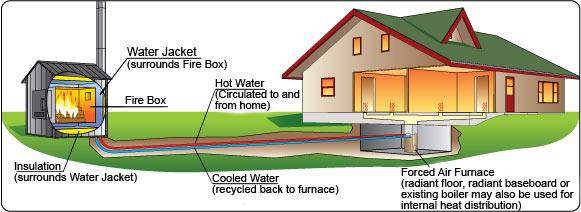Choosing the Right Hydronic Heater
On this page:
- Hydronic heater basics
- EPA-qualified hydronic heaters program
- Qualified vs. certified
- Check your state and local ordinances
Hydronic heater basics
Hydronic heaters, or outdoor wood boilers, are typically located outside in small sheds with short smokestacks. They burn wood, which heats either water or water-antifreeze, which sends the heat and hot water through pipes into nearby buildings, such as homes, barns and greenhouses. However, hydronic heaters may be located indoors and may use other biomass for fuel, such as corn or wood pellets.

Qualified vs. certified
The EPA-qualified voluntary program for hydronic heaters ended in 2015, and most hydronic heaters that are "qualified" under EPA's Voluntary Hydronic Heater Program are not "certified" per EPA's Wood Heater New Source Performance Standard. Contact your state or local air quality agency for clarification on the type of wood-burning appliances, if any, that may legally be installed in your area. Find EPA-certified hydronic heaters.
EPA-qualified hydronic heaters program (Terminated)
The Voluntary Hydronic Heater Program ended May 15, 2015. This information is for historical purposes only.
EPA's Voluntary Hydronic Heater Partnership Program was first launched in 2007, providing a proccess for manufacturers to demonstrate models that were 70 percent cleaner than unqualified models. The program goal was to achieve early emission reductions, protecting public health sooner than a federal regulation. The program evolved to Phase 2, and EPA-qualified units were up to 90 percent cleaner than older, unqualified units.
Information for Consumers
- Look for the EPA-certified label when purchasing a hydronic heater
- List of EPA-certified hydronic heaters
Contact your state or local air quality agency for clarification on the type of wood-burning appliances, if any that may legally be installed in your area.
